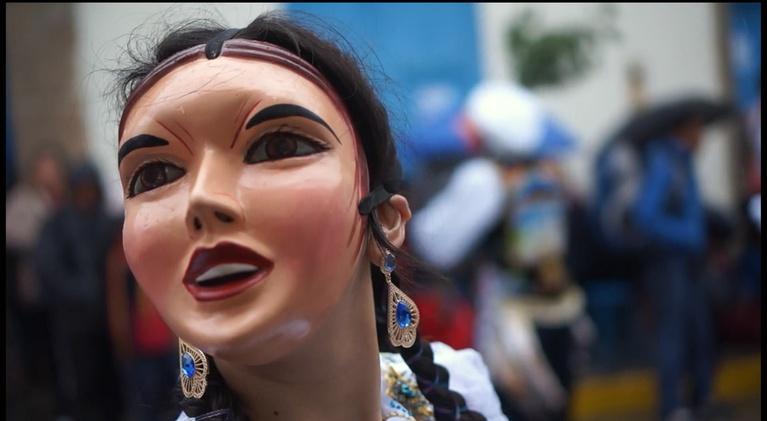PBS’ 'Sacred' documentary gives intimate glimpses of faith around the world
A scene from the film Sacred.
(COMMENTARY) A new documentary film recently aired on PBS beautifully shows faith as something lived-- not just a set of beliefs, traditions or doctrines on paper.
The film, Sacred, takes viewers on a journey around the world, giving us intimate shots of people’s daily walk with their faith whether it be Islam, Buddhism, Christianity, Judaism or others. The filmmakers artfully show us how faith develops and changes throughout three key phases of people’s lives: initiation, practice and passage.
Academy Award-winning director Thomas Lennon coordinated more than 40 filmmakers throughout the world to shoot the footage used in the film. Lennon got his start at ABC News in the Soviet Union, Middle East and South America, and has made more than 40 documentary films.
In the first stage, we are shown several scenes of birth from different faith traditions. As the babies enter the world, each is introduced to their parents’ faith.
In Cairo, Egypt we see a man sing a Muslim call to prayer to his newborn. From New York, France, and Ethiopia, babies are initiated into their faith by loved ones with ceremonies for circumcisions, baptisms and calls to prayer.
Then, we see babies growing up. The films shows the joyous nature of children through different faith upbringings, from a shot of a little girl laughing during prayer inside a mosque to proud parents in Myanmar dressing their sons for initiation into a Buddhist monastery. This part of Sacred might remind some viewers of a 2010 documentary by Thomas Balmès called “Babies” that followed four newborns in different parts of the world through their first year after birth.
Sacred tells these stories of people in a unique way. There is no expert or narrator to talk us through all the technicalities of what’s going on. Instead it’s the young and old women and men showing us what their faith and traditions look like. You don’t just see religion. You see the person practicing the religion.
The second stage of the film introduces us to the practice of religion. In this stage, we see families and individuals deal with different struggles in their lives.
For example, a man named Elad who practices Judaism in Ukraine talks about what prayer means to him. At a pilgrimage, he prayed for a wife. One year later, he was married to her.
From there, we travel to Sierra Leone, where Mohammed is burying bodies from people who’ve died from Ebola. Shots of posters in the country shows the damage that the Ebola crisis has wrought on the country. The posters are not just signs on what to do when you encounter a body of an Ebola victim. They also instruct how to safely bury the dead according to religious customs.
A poster above two school boys states: “When someone dies at home, pay your respect at least one meter away. Call 117 for the burial team.”
As Ebola claimed Muhammad's whole family, he shows how he understands this public health tragedy through his religion: he concludes that God is angry with them.
By the half point of Sacred, I became impressed by the way the story is crafted. The directors don’t use much narrative voice. They just turn their cameras loose on the subjects and create visual vignettes large and small, and that’s what makes the film so good.
Watching this as a woman from the Christian faith, I couldn’t always relate or understand aspects of other faiths at times. However, I enjoyed all the visual moments even when I didn’t understand the complete theology or background of someone’s faith. The film created simple empathy toward people of faith while not trying to minimize the complexities of beliefs.
The last stage Sacred takes us on is passage. We journey into the lives of people who are in their old age, and we see their embrace of correcting wrongs and accepting what’s to come.
In Lahore, Pakistan, we follow Bashira through her journey of forgiveness to the murderers who took the lives of her husband and son. She does this out of obedience, ultimately wanting to make God happy. We follow a woman named Carolyn, a Christian from Connecticut who is dealing with terminal illness and believes prayer and trusting in God brings peace.
In the last few seconds of the 87-minute film, the circle comes back around to a baby being born.
Throughout the different religions and faces, Sacred portrays something that unites billions of people around the world: a need to understand and have a relationship with a Creator.
And for those who don’t believe in a creator, the film may help them understand religion and religious people who do.
Where Can You Watch It: PBS online
Princess Jones is an intern with ReigionUnplugged.com and an editorial clerk at The New York Post. She is a recent alumna of Trevecca Nazarene University and of the NYC Semester in Journalism at The King’s College in NYC.

